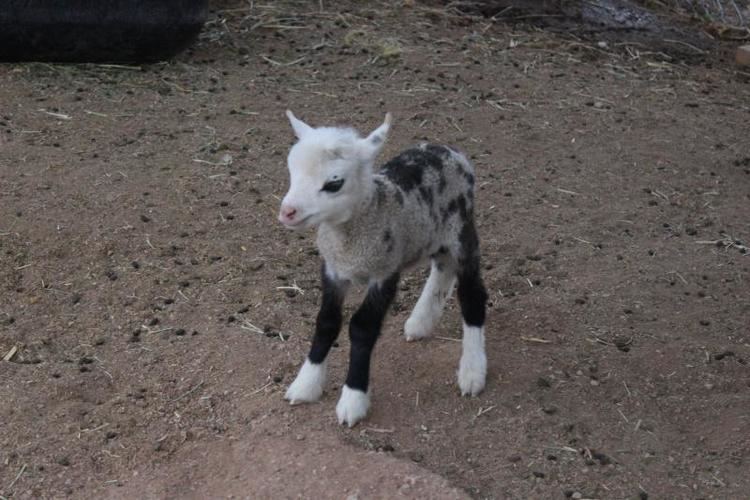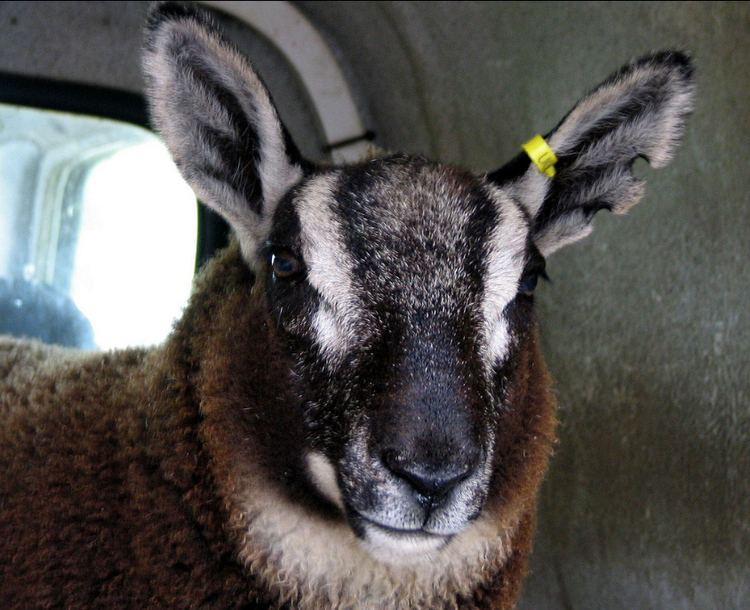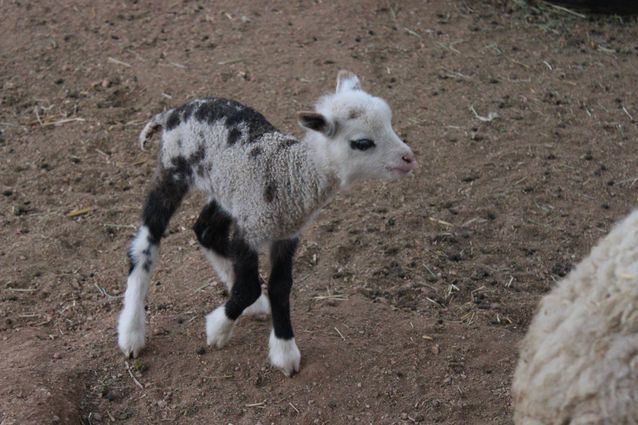Genus OvisCapra Phylum Chordata Order Even-toed ungulate | Rank Hybrid Higher classification Caprinae | |
 | ||
Species Ovis aries × Capra hircus Similar Goat, Pygmy goat, Caprinae, Boer goat, Nigerian Dwarf goat | ||
What do you get when you cross sheep goat bbc news
A sheep–goat hybrid (sometimes called a geep or shoat in popular media) is the hybrid offspring of a sheep and a goat. Although sheep and goats seem similar and can be mated, they belong to different genera in the subfamily Caprinae of the family Bovidae. Sheep belong to the genus Ovis and have 54 chromosomes, while goats belong to the genus Capra and have 60 chromosomes. The offspring of a sheep-goat pairing is generally stillborn. Despite widespread shared pasturing of goats and sheep, hybrids are very rare, indicating the genetic distance between the two species. Though sometimes called "geep", they are not to be confused with Sheep–goat chimera, which are artificially created.
Contents

Cases

At the Botswana Ministry of Agriculture in 2000, a male sheep impregnated a female goat resulting in a live offspring. This hybrid had 57 chromosomes, intermediate between sheep (54) and goats (60) and was intermediate between the two parent species in type. It had a coarse outer coat, a woolly inner coat, long goat-like legs and a heavy sheep-like body. Although infertile, the hybrid had a very active libido, mounting both ewes and does even when they were not in heat. He was castrated when he was 10 months old, as were the other kids and lambs in the herd.

A male sheep impregnated a female goat in New Zealand resulting in a mixed litter of kids and a female sheep-goat hybrid with 57 chromosomes. The hybrid was subsequently shown to be fertile when mated with a ram. In France natural mating of a doe with a ram produced a female hybrid carrying 57 chromosomes. This animal backcrossed in the veterinary college of Nantes to a ram delivered a stillborn and a living male offspring with 54 chromosomes.

On May 12, 2011, a healthy and fertile geep was born in Bant, Flevoland, the Netherlands. The geep mated with a ewe and on December 25, 2012 two healthy lambs were born.

In April 2014, the Irish Farmers Journal reported on the birth of an offspring resulting from a goat-sheep cross, on the farm of Paddy Murphy, Ballymore, Co. Kildare. The animal was reported to be healthy and thriving; no chromosomal investigation has occurred yet.
Also in April 2014, a naturally conceived and healthy geep was born in Burladingen-Starzeln in Zollernalbkreis, Germany.
On Sunday, July 27, 2014, a geep named Butterfly was born at My Petting Zoo in Scottsdale, Arizona.
Characteristics
There is a long-standing belief in sheep–goat hybrids, which is presumably due to the animals' resemblance to each other. Some primitive varieties of sheep may be misidentified as goats. In Darwinism – An Exposition Of The Theory Of Natural Selection With Some Of Its Applications (1889), Alfred Russel Wallace wrote:
[...] the following statement of Mr. Low: "It has been long known to shepherds, though questioned by naturalists, that the progeny of the cross between the sheep and goat is fertile. Breeds of this mixed race are numerous in the north of Europe." Nothing appears to be known of such hybrids either in Scandinavia or in Italy; but Professor Giglioli of Florence has kindly given me some useful references to works in which they are described. The following extract from his letter is very interesting: "I need not tell you that there being such hybrids is now generally accepted as a fact. Buffon (Supplements, tom. iii. p. 7, 1756) obtained one such hybrid in 1751 and eight in 1752. Sanson (La Culture, vol. vi. p. 372, 1865) mentions a case observed in the Vosges, France. Geoff. St. Hilaire (Hist. Nat. Gén. des reg. org., vol. iii. p. 163) was the first to mention, I believe, that in different parts of South America the ram is more usually crossed with the she-goat than the sheep with the he-goat. The well-known 'pellones' of Chile are produced by the second and third generation of such hybrids (Gay, 'Hist, de Chile,' vol. i. p. 466, Agriculture, 1862). Hybrids bred from goat and sheep are called 'chabin' in French, and 'cabruno' in Spanish. In Chile such hybrids are called 'carneros lanudos'; their breeding inter se appears to be not always successful, and often the original cross has to be recommenced to obtain the proportion of three-eighths of he-goat and five-eighths of sheep, or of three-eighths of ram and five-eighths of she-goat; such being the reputed best hybrids."
Supposedly, most sheep–goat hybrids die as embryos. Hybrid male mammals are often sterile, demonstrating a phenomenon known as Haldane's rule. The Haldane phenomenon may apply even when the parent species have the same number of chromosomes, as in most cat-species hybrids. It sometimes does not apply when the species chromosome number is different, as in wild horse (chromosome number = 66) with domestic horse (chromosome number = 64) hybrids. Hybrid female fertility tends to decrease with increasing divergence in chromosome similarity between parent species. Presumably, this is due to mismatch problems during meiosis and the resulting production of eggs with unbalanced genetic complements.
